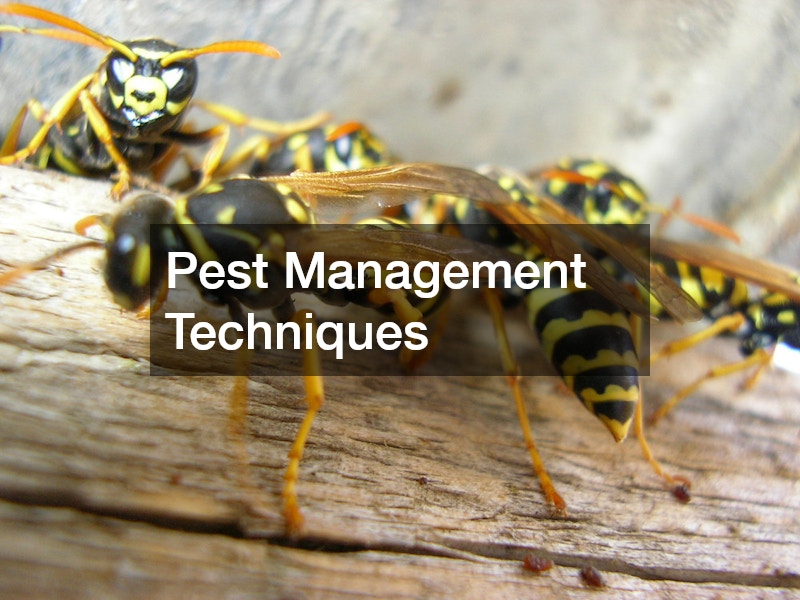Having a lush, green lawn can greatly enhance the appearance of your home and increase your curb appeal. To achieve the perfect lawn, it’s essential to follow proper lawn care practices. This comprehensive guide will walk you through everything you need to know to love your lawn and keep it looking its best.
Selecting the Right Grass Type
When it comes to selecting the right grass type for your lawn, it’s important to consider factors such as your climate, soil type, and level of maintenance. Consulting with a landscape contractor can help you choose the best grass variety that will thrive in your specific environment. By selecting the right grass type, you can ensure a healthy and vibrant lawn that you’ll love.
One of the most popular grass types for residential lawns is Kentucky Bluegrass, known for its lush, dark green color and resilience to foot traffic. Another popular option is Fescue, which is well-suited for cooler climates and shaded areas. Bermuda grass, on the other hand, thrives in warm climates and is perfect for areas with high foot traffic.
Your landscape contractor can also help you determine the best grass type based on your desired level of maintenance. Some grass varieties require frequent mowing and fertilization, while others are more low-maintenance. By selecting the right grass type for your lawn, you can love your lawn and ensure a beautiful and healthy yard that you’ll love spending time in.
Soil Preparation Techniques
Proper soil preparation is essential for the health and vitality of your lawn. Before planting new grass or performing any landscaping, it’s crucial to ensure that your soil is properly prepared. This may involve testing your soil to determine its pH level and nutrient content, as well as amending it as needed to create an optimal growing environment.
Landscape irrigation plays a key role in soil preparation, as it helps to evenly distribute water and nutrients throughout your lawn. An experienced landscaping contractor can help you develop an irrigation plan that ensures your soil remains properly hydrated and nourished. By utilizing landscape irrigation techniques, you can promote healthy root growth and overall lawn health.
By investing time and effort into proper soil preparation techniques, you can love your lawn and create a strong foundation for your lawn to thrive. Healthy soil promotes healthy grass growth, resulting in a lush and vibrant lawn that you’ll love coming home to.
Effective Watering Strategies
Proper watering is essential for maintaining a healthy lawn, as it helps to promote root growth and nutrient absorption. Irrigation systems are a popular choice for ensuring your lawn receives adequate water, as they can be programmed to provide consistent and evenly distributed water. Whether you opt for a sprinkler system or drip irrigation, it’s important to water your lawn deeply and infrequently to encourage deep root growth.
A local landscaper can help you design and install an irrigation system that meets the specific needs of your lawn. By utilizing proper watering techniques, you can prevent overwatering and underwatering, both of which can lead to lawn stress and potential damage. Consistent and effective watering strategies will help your lawn thrive and maintain its lush appearance.
By implementing proper irrigation systems and watering techniques, you can ensure that your lawn remains healthy and vibrant throughout the year. Consistent watering promotes deep root growth, which in turn helps your grass withstand hot and dry conditions. With effective watering strategies in place, you can love your lawn and enjoy a beautiful lawn that you’ll love spending time in.
Mowing Best Practices

Regular mowing is essential for maintaining a neat and tidy appearance for your lawn. Local landscaping contractors recommend mowing your grass at the appropriate height to promote healthy growth and discourage weeds. Mowing too short can weaken your grass and lead to stress, while mowing too tall can create an ideal environment for pests and disease.
It’s important to keep your mower blades sharp to ensure clean cuts that promote healthy grass growth. Additionally, varying your mowing pattern can help prevent soil compaction and encourage upright growth. Your local landscaper can provide guidance on the best mowing practices for your specific grass type and growing conditions.
By following mowing best practices, you can maintain a well-manicured lawn that enhances the overall appearance of your home. Regular mowing promotes healthy grass growth and discourages weeds, resulting in a lush and vibrant lawn that you’ll love spending time in.
Fertilization Timing and Methods
Fertilization is key to providing your lawn with essential nutrients for healthy growth. Local landscaping contractors recommend fertilizing your lawn at the right times throughout the year to promote strong root development and vibrant grass. By choosing the appropriate fertilizer and applying it correctly, you can ensure that your lawn remains healthy and green.
Timing is crucial when it comes to fertilization, as applying fertilizer at the wrong time can be ineffective or even harmful to your grass. Your local landscaping contractor can help you develop a fertilization schedule that aligns with the needs of your lawn and the specific requirements of your grass type. By following proper fertilization timing and methods, you can ensure a healthy and vibrant lawn that you’ll love.
In addition to timing, proper application methods are equally important when fertilizing your lawn. Whether you choose liquid or granular fertilizer, it’s essential to evenly distribute the product to avoid patchy or uneven growth. By following the recommendations of your local landscaping contractor, you can love your lawn, achieve optimal results, and maintain a beautiful lawn that enhances your outdoor space.
Weed Management Solutions
Weeds can quickly take over your lawn and detract from its appearance, making weed control an essential aspect of lawn care. Local pest control companies can help you develop a weed management plan that targets existing weeds while preventing new ones from taking root. By implementing effective weed control strategies, you can maintain a healthy and weed-free lawn that you’ll love.
Regularly mowing your lawn at the appropriate height can help prevent weeds from germinating and spreading. Additionally, applying pre-emergent herbicides can create a barrier that inhibits weed growth before it starts. Post-emergent herbicides can target existing weeds to eliminate them and prevent them from returning.
Your local pest control company can recommend the best weed management solutions for your lawn based on the types of weeds present and the extent of the infestation. By addressing weed problems proactively and effectively, you can love your lawn and maintain a beautiful and well-maintained lawn that enhances your outdoor space.
Pest Management Techniques

Pests such as insects and rodents can wreak havoc on your lawn, causing damage to your grass and landscaping. Local pest control companies can help you identify and manage pest infestations through targeted treatments and prevention strategies. By working with a professional pest control company, you can protect your lawn from pests and ensure a healthy and thriving outdoor environment.
Integrated pest management techniques combine biological, cultural, and chemical controls to effectively manage pest populations while minimizing environmental impact. Your local pest control company can develop a customized pest management plan that addresses the specific needs of your lawn and targets pests without harming beneficial insects or wildlife.
Regular inspections and monitoring are key components of effective pest management, as they allow you to identify pest problems early and take action before they escalate. By partnering with a local pest control company that specializes in lawn care, you can love your lawn and protect your outdoor space from pests and maintain a beautiful and pest-free lawn that you’ll love spending time in.
Seasonal Lawn Care Routines
Seasonal lawn care routines are essential for maintaining a healthy and vibrant lawn year-round. Landscape contractors recommend different tasks for each season to ensure that your lawn remains in top condition. From spring aeration and overseeding to fall leaf removal and winterizing, following a seasonal lawn care routine can help you achieve the lawn of your dreams.
In the spring, it’s important to aerate your lawn to alleviate soil compaction and promote healthy root growth. Overseeding can help fill in bare patches and enhance overall grass density. Summer maintenance tasks may include regular watering, mowing, and weed control to keep your lawn looking its best.
Fall is an ideal time for core aeration, dethatching, and applying winter fertilizer to prepare your lawn for the colder months ahead. Winterizing your lawn with proper care and maintenance can help protect it from frost damage and ensure a quick green-up in the spring. By following seasonal lawn care routines, you can love your lawn and keep your lawn in optimal condition throughout the year and enjoy a healthy and vibrant outdoor space.
Creating Inviting Landscape Borders
Beautiful landscape borders can enhance the appearance of your lawn and create definition within your outdoor space. Landscaping companies offer a variety of options for creating inviting borders, from edging and mulching to hardscaping features. By incorporating landscape borders into your lawn design, you can add visual interest and improve the overall aesthetics of your outdoor area.
Edging is a popular choice for creating clean lines around flower beds, walkways, and other landscaping features. Mulch can be used to define borders and provide a natural transition between different areas of your lawn. Hardscaping elements such as stones, bricks, or pavers can create durable and attractive borders that enhance the overall design of your outdoor space.
Working with landscaping companies can help you design and install landscape borders that complement your lawn and reflect your personal style. By incorporating inviting landscape borders into your outdoor space, you can love your lawn and create a cohesive and well-defined landscape that enhances the beauty of your lawn and adds to your enjoyment of your outdoor area.
Incorporating Native Plants
Incorporating native plants into your landscaping can have numerous benefits for your lawn and the environment. Local landscaping contractors can help you select native plants that are well-suited to your climate and growing conditions. By incorporating native plants into your lawn design, you can support local ecosystems, conserve water, and attract beneficial wildlife.
Native plants are adapted to your specific climate and soil conditions, making them more resilient and low-maintenance. By choosing native plants for your landscaping, you can reduce the need for supplemental watering, fertilization, and pest control. Additionally, native plants provide food and habitat for local wildlife, helping to support biodiversity and create a thriving ecosystem.
Your local landscaping contractor can help you create a sustainable and environmentally-friendly landscape by incorporating native plants into your lawn design. By embracing native plants, you can love your lawn and enhance the beauty of your outdoor space, support local ecosystems, and create a healthy and vibrant lawn that you’ll love for years to come.
Embracing Lawn Alternatives

For homeowners seeking a low-maintenance lawn solution, embracing lawn alternatives can offer a sustainable and eco-friendly option. Loving your lawn doesn’t have to mean traditional grass; there are many alternatives that can provide a beautiful and functional outdoor space. From ground covers and wildflowers to artificial turf and native grasses, lawn alternatives can significantly reduce water usage, maintenance, and chemical inputs. These options not only save time and resources but also contribute positively to the local ecosystem by promoting biodiversity.
Another benefit of opting for lawn alternatives is their resilience and adaptability to various climates. For instance, native grasses are well-suited to local conditions, requiring less water and fertilizer while thriving in the environment. Ground covers like creeping thyme not only look attractive but can also withstand foot traffic, making them ideal for high-use areas. By choosing the right alternatives, homeowners can love your lawn and create a durable and visually appealing landscape that stands the test of time.
Incorporating a variety of plants and textures can enhance the aesthetic appeal of your outdoor space. For example, combining colorful wildflowers with hardy ground covers can create a dynamic, layered look that attracts pollinators and adds seasonal interest. Homeowners can also consider pathways or seating areas integrated with these alternatives, promoting a functional and inviting atmosphere. By exploring lawn alternatives, you can cultivate a vibrant, sustainable yard that reflects your personal style while benefiting the environment.
Achieving a healthy and vibrant lawn requires a combination of proper care and maintenance techniques. By selecting the right grass type, preparing your soil, implementing effective watering and mowing strategies, and following seasonal lawn care routines, you can maintain a beautiful lawn that enhances the appearance of your home. Working with landscape contractors, local landscapers, and pest control companies can help you address specific lawn care challenges and ensure that your lawn remains healthy and pest-free. By incorporating landscape borders, native plants, and lawn alternatives, you can love your lawn and create a sustainable and attractive outdoor space that you’ll love for years to come.



